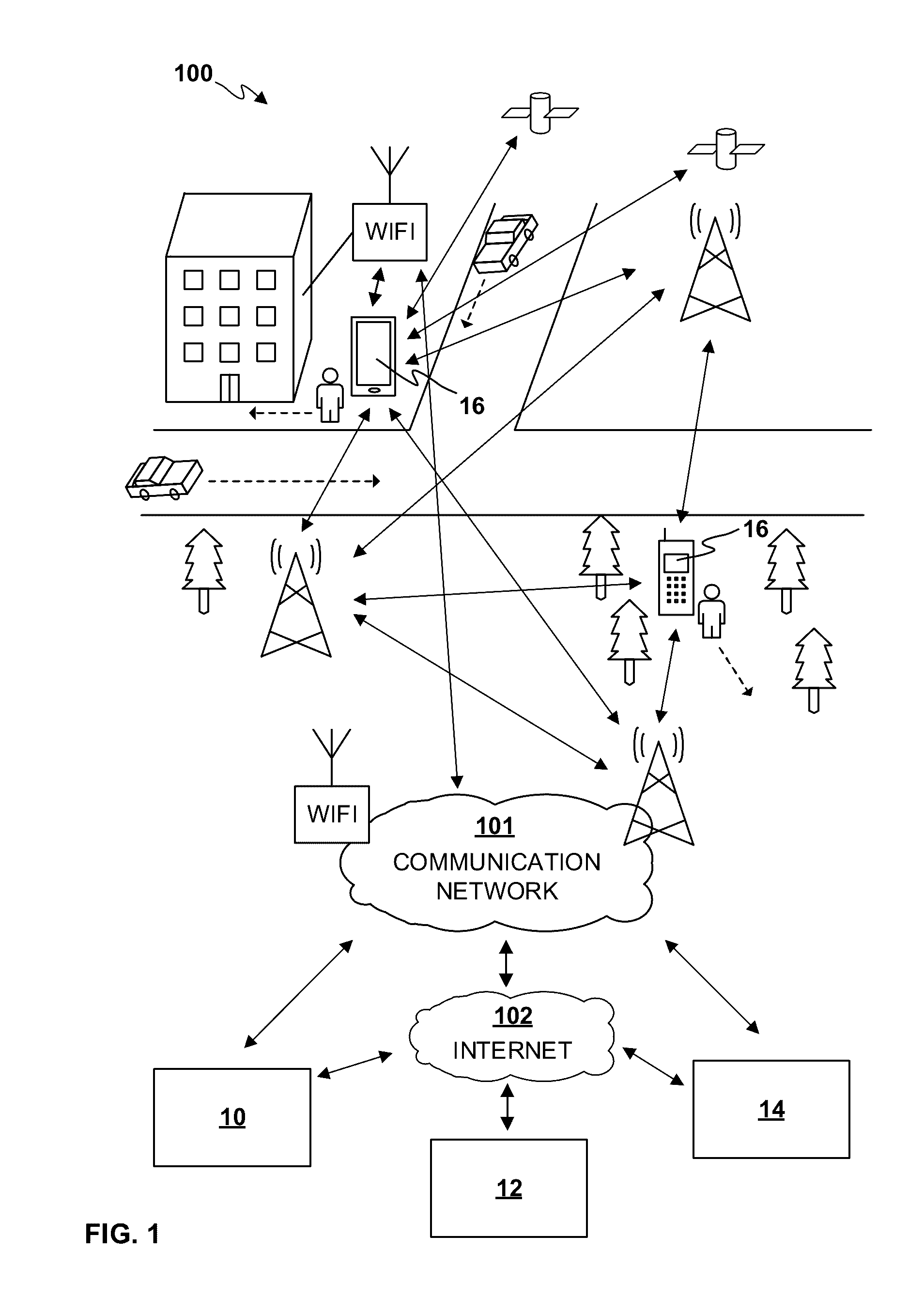Method and arrangement for locating a moble device
a technology of moble devices and mobles, applied in the field of moble devices, can solve the problems of inconvenient process, easy interruption of associated signal coverage, poor performance of the location tracking system based thereon, etc., and achieve the effect of facilitating current estimation and energy saving
- Summary
- Abstract
- Description
- Claims
- Application Information
AI Technical Summary
Benefits of technology
Problems solved by technology
Method used
Image
Examples
Embodiment Construction
[0066]FIG. 1 illustrates, at 100, an embodiment of the present invention via a merely exemplary use scenario thereof. The locating system may be at least partly disposed in a number of servers 10 residing as accessible via communications network(s) such as the Internet and / or cellular network(s). Optionally, a cloud computing environment 12 providing efficient and easy scalability of resources may be utilized to implement the system. In some other embodiments, the mobile devices 16 to be located may be self-contained in a sense that they may locally execute a locating method in accordance with the present invention preferably even if no Internet or other communications connection exists with elements 10, 12, 14 accessible via the Internet and / or other network(s).
[0067]In some further embodiments, the mobile devices 16 may be located by the (network) arrangement through utilization of information the mobile devices 16 provide to the network. At least part of the information may be su...
PUM
 Login to View More
Login to View More Abstract
Description
Claims
Application Information
 Login to View More
Login to View More - R&D
- Intellectual Property
- Life Sciences
- Materials
- Tech Scout
- Unparalleled Data Quality
- Higher Quality Content
- 60% Fewer Hallucinations
Browse by: Latest US Patents, China's latest patents, Technical Efficacy Thesaurus, Application Domain, Technology Topic, Popular Technical Reports.
© 2025 PatSnap. All rights reserved.Legal|Privacy policy|Modern Slavery Act Transparency Statement|Sitemap|About US| Contact US: help@patsnap.com



